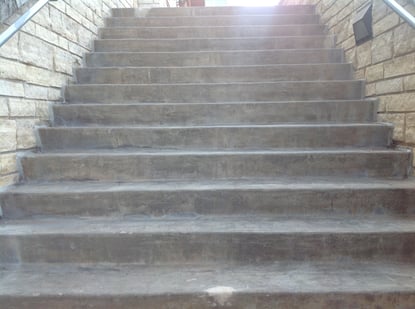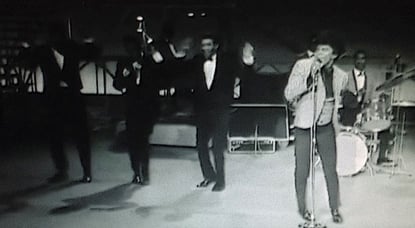Today's Blogapalooza guest post is from Jessica James. Jessica has been working for one of the world's larget casual dining restaurant chains since 2006. She is currently working on completing her master's degree in journalism from The University of Kansas. We're excited to share Jessica's seven lessons for creative success - lessons that are a valuable guide to creating no matter the industry in which you work!
Creative Success - A 7 Lesson Guide to Creating by Jessica James
For 15 years, I have been in the business of creating new products and ideas. The first eight years were formative; learning my craft, sharpening my skills, networking, and building a reputation - finding my way in an all-consuming industry. The last seven years have been innovative - a culmination of what I have learned, whom I've had the opportunity to know, and the creative success challenge that comes with maintaining relevance everyday.
From these innovative years, I have identified seven lessons for creative success that are my guide to creating.
1. Take Notes...and Use Them!
I use the Notes app on my iPhone everyday. Perhaps I'm a bit OCD, but I have lists for everything. Ideas for my house. Ideas for upcoming projects. Wines I need to try. Places I need to go. Anything that might be useful for inspiring creativity down the road gets logged into notes.
 I read the notes a few times a week, usually at night when unwinding. I use this time to focus on something that may have grabbed my attention earlier and think about how it might apply to things I'm working on now. This process is very helpful in balancing my decisiveness and impulsiveness with my desire to present researched and thought out ideas.
I read the notes a few times a week, usually at night when unwinding. I use this time to focus on something that may have grabbed my attention earlier and think about how it might apply to things I'm working on now. This process is very helpful in balancing my decisiveness and impulsiveness with my desire to present researched and thought out ideas.
2. Read All the Time
This ties to the first creative success tip. If you're taking notes all the time and generating lists, chances are, you're reading things that are interesting and relevant to your personal and professional life.
I try to read a mix of things-- parenting magazines, fashion magazines, cooking magazines, trade journals, blogs, websites, social media outlets, news magazines, Twitter, and the occasional 'trash magazine.' A mix of information will keep your ideas fresh and give you a perspective and creative success you would not otherwise have.
3. Focus on the Fix
When creating things, it is inevitable people will challenge your products or ideas, valid or not. Don't minimize your creative critics. Pay close attention to your critics and what they are saying. Be discreet about it and you will stay ahead of them.
Think about how things might go wrong and focus on how you would fix them. Do this all the time - not just when something is near completion. Have the voice of your creative critics in your head and use it to fine-tune your work.
4. Stay Organized
I read once somewhere (affiliate link) that creative people tend to achieve their best creative success in environments described as organized chaos. To the contrary, analytical left-brained people work best when things are tidy, organized and maintained. I relate to this. My desk at work has piles of things that haven't moved in a month or so, but I could tell you the contents of every pile. It's a mess, but it's organized.
Keeping your ideas and projects in organized and accessible piles or files will help you prioritize and shift gears quickly from one project to the next if needed – something critical in today's world of news updates by the minute.
5. Do Things You Hate to Do
 This is nothing new. You should do things that make you uncomfortable. It helps to vary your perspective on your life and work. It makes you stronger. Most importantly, doing things you hate to do builds character and makes you more interesting.
This is nothing new. You should do things that make you uncomfortable. It helps to vary your perspective on your life and work. It makes you stronger. Most importantly, doing things you hate to do builds character and makes you more interesting.
I recently joined my undergraduate university's alumni association. I was not involved on campus at all when I was there. I was a non-traditional student who lived off campus and attended classes a few nights a week for three years. I joined the alumni association to feel more connected to the hundreds of dollars per month I am about to start paying back as a result of student loans that funded my private, Jesuit-school education.
I don't really enjoy my time spent with the association. The monthly commitment is always preceded by me trying to think of how I can get out of it. The people are nice; they are just nothing like me. They are Catholic, very connected to the university, know one another, and are all adverse to taking risks or creating conflict. They are homogenous and tend to surround themselves with people just like them. Needless to say, this experience has given me a better understanding of how to interact with people comfortable with status quo.
6. Consult a Consulate
It didn't take me long to realize my creative success was tied directly to the success of others and their willingness to aid me when I needed it. The half a dozen or so people I rely on most are a motley crew of experts, inside and outside of my industry.
Being nimble and being able to rally others to help you make things happen is critical to the creative process. I'm connected with lawyers, artists, tech-guys, photographers, producers, entrepreneurs, writers, police & firemen, and educators. You never know who will spark an idea or make a connection to redirect your path to success.
7. Fail
Being creative comes with a lot of failure. I generate over five hundred ideas every year; half of those might be shared with other people and only a dozen or so might come to fruition.
A lot of creative success comes with a lot of failure. Don't be afraid to fail; fear will only hold you back. Each time you fail, you should learn something. Each failure should change your perspective. Creative success is built on a foundation of failure.
And what does creative success look like?
What's the theme that ties together this seven lesson guide to creating? Always remember that creative success is going from failure to failure without a loss of enthusiasm! - Jessica James



